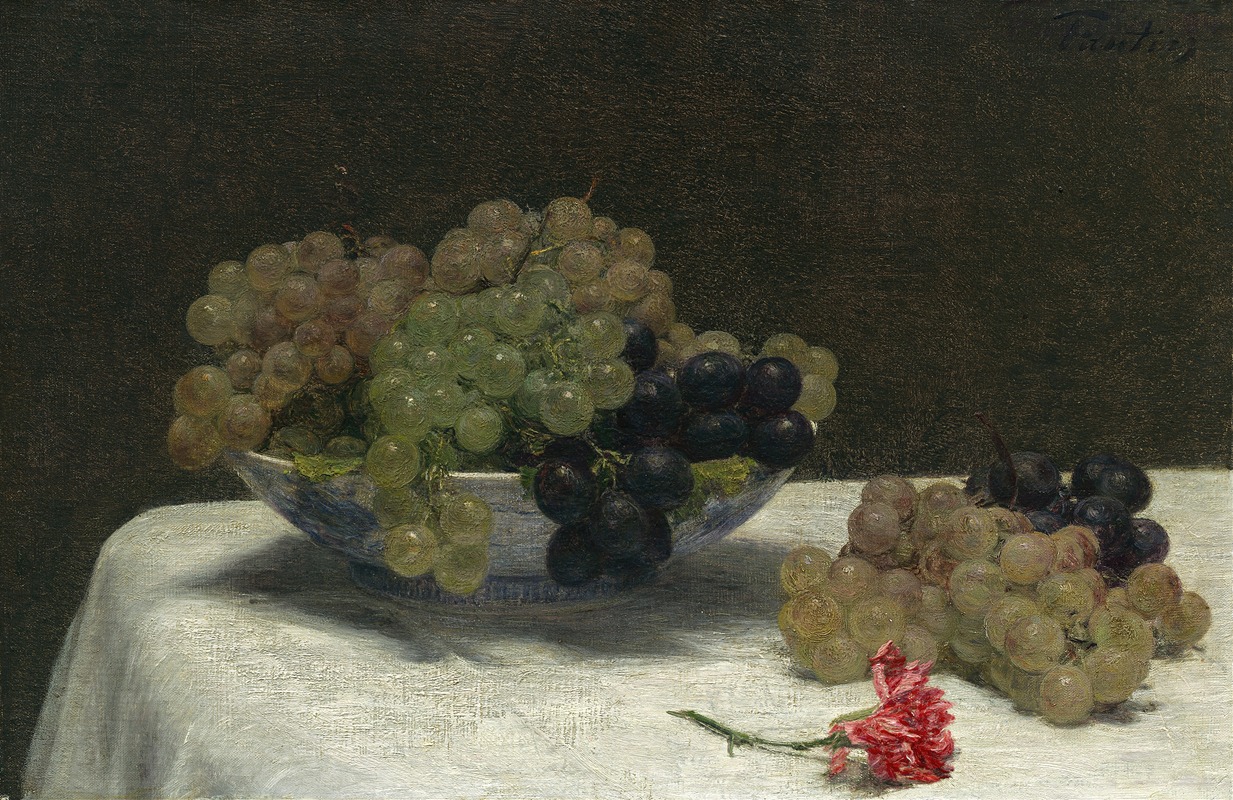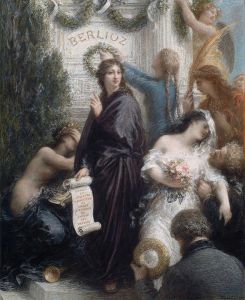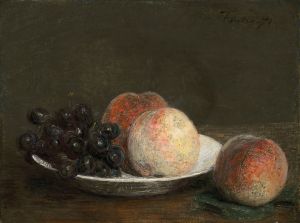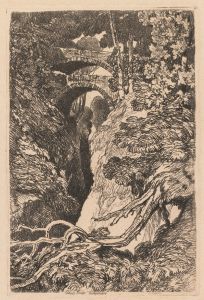
Still Life with Grapes and a Carnation
A hand-painted replica of Henri Fantin-Latour’s masterpiece Still Life with Grapes and a Carnation, meticulously crafted by professional artists to capture the true essence of the original. Each piece is created with museum-quality canvas and rare mineral pigments, carefully painted by experienced artists with delicate brushstrokes and rich, layered colors to perfectly recreate the texture of the original artwork. Unlike machine-printed reproductions, this hand-painted version brings the painting to life, infused with the artist’s emotions and skill in every stroke. Whether for personal collection or home decoration, it instantly elevates the artistic atmosphere of any space.
Henri Fantin-Latour's Still Life with Grapes and a Carnation is a notable example of the artist's mastery in still-life painting, a genre for which he is widely celebrated. Painted in 1885, this work exemplifies Fantin-Latour's meticulous attention to detail, his refined sense of composition, and his ability to capture the delicate interplay of light and texture. The painting features a carefully arranged grouping of objects, including a cluster of grapes and a single carnation, set against a neutral background. The simplicity of the composition allows the viewer to focus on the intricate details and the natural beauty of the subjects.
Fantin-Latour was a French painter and lithographer, born in Grenoble in 1836. He is best known for his still-life paintings and portraits, as well as his imaginative lithographs inspired by music and literature. His still-life works, such as Still Life with Grapes and a Carnation, are celebrated for their realism and subtlety, reflecting the influence of Dutch Golden Age painters like Jan van Huysum and Willem Kalf. Fantin-Latour's ability to render textures, such as the translucency of grape skins or the delicate petals of a flower, demonstrates his technical skill and keen observational abilities.
The painting is characteristic of Fantin-Latour's approach to still life, which often emphasized harmony and balance. In Still Life with Grapes and a Carnation, the arrangement of the objects is both naturalistic and carefully considered. The grapes, with their rich, dark tones, contrast with the soft, pale hues of the carnation, creating a visual interplay that draws the viewer's eye. The neutral background enhances this effect, providing a quiet, understated setting that allows the objects to stand out.
Fantin-Latour's still-life paintings were highly sought after during his lifetime, particularly in England, where they were admired for their elegance and technical precision. His works were often acquired by collectors and exhibited in prestigious galleries. Today, Still Life with Grapes and a Carnation is recognized as a fine example of his contribution to the still-life tradition, showcasing his ability to elevate everyday objects into works of art.
The painting is housed in the National Gallery in London, where it continues to be appreciated by art enthusiasts and scholars alike. It remains a testament to Fantin-Latour's skill and his enduring legacy as one of the 19th century's foremost painters of still life.

















